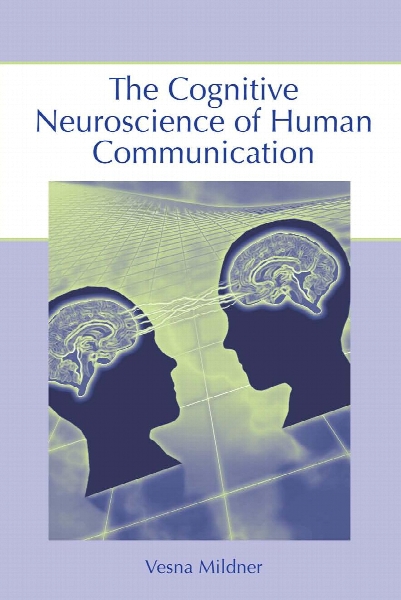The cognitive neuroscience of human communication
- نوع فایل : کتاب
- زبان : انگلیسی
- مؤلف : V Mildner
- ناشر : Mahwah, NJ : Lawrence Erlbaum Associates
- چاپ و سال / کشور: 2008
- شابک / ISBN : 9781435603332
Description
Foreword ..............................................................................................................xi Raymond D. Kent Preface ...............................................................................................................xiii Chapter 1 Central Nervous System .................................................................. 1 The Development of the Central Nervous System ................................................ 1 Structure and Organization of the Central Nervous System ................................ 5 Sensation and Perception .................................................................................... 24 Neural Bases of Speech Perception and Production ........................................... 26 Hearing, Listening and the Auditory Cortex ................................................. 26 Movement and Speech Production................................................................. 30 Relationship Between Speech Production and Perception ............................ 34 Neighboring Location of Motor and Sensory Neurons ............................. 35 Multimodal Neurons ................................................................................. 36 Parallel and Recurrent Pathways ............................................................... 37 Chapter 2 Sex Differences ............................................................................. 39 Structural Differences ......................................................................................... 39 Differences in Functional Organization of the Brain ......................................... 40 Behavioral and Cognitive Differences ................................................................ 40 Chapter 3 Brief History of Neurolinguistics from the Beginnings to the 20th Century ....................................................................... 45 Chapter 4 Research Methods ......................................................................... 51 Clinical Studies ................................................................................................... 51 Studies of Split-Brain Patients ....................................................................... 53 Cortical Stimulation ............................................................................................ 54 Transcranial Magnetic Stimulation (TMS) .................................................... 55 Wada Test ............................................................................................................ 55 Neuroradiological Methods ................................................................................ 56 Computerized (Axial) Tomography—C(A)T ................................................. 56 Magnetic Resonance Imaging (MRI) ............................................................ 56 Functional Magnetic Resonance Imaging (fMRI) ......................................... 57 Recording of Activity ......................................................................................... 57 Electrophysiological Methods ........................................................................ 58 Single-Unit or Single-Cell Recording ....................................................... 58 Electroencephalography (EEG) ................................................................ 59 viii The Cognitive Neuroscience of Human Communication Event-Related Potentials (ERP) ................................................................ 59 Cortical Cartography ................................................................................. 60 Magnetoencephalography (MEG)............................................................. 60 Radioisotopic Methods .................................................................................. 61 Positron Emission Tomography (PET)...................................................... 61 Single-Photon Emission Computed Tomography (SPECT) ...................... 62 Ultrasound Methods ....................................................................................... 62 Functional Transcranial Doppler Ultrasonography (fTCD) ...................... 62 Summary ........................................................................................................ 62 Behavioral Methods ....................................................................................... 63 Paper-and-Pencil Tests .............................................................................. 64 Word Association Tests ............................................................................. 64 Stroop Test ................................................................................................. 64 The Wisconsin Card Sorting Test (WCST) ............................................... 64 Priming and Interference .......................................................................... 64 Shadowing ................................................................................................. 65 Gating ........................................................................................................ 65 Dichotic Listening ..................................................................................... 66 Divided Visual Field.................................................................................. 67 Dual Tasks ................................................................................................. 67 Summary ........................................................................................................ 68 Aphasia Test Batteries ......................................................................................... 68 Chapter 5 The Central Nervous System: Principles, Theories and Models of Structure, Development and Functioning .................... 71 Principles ............................................................................................................ 71 Hierarchical Organization .............................................................................. 71 Parallel Processing ......................................................................................... 72 Plasticity ......................................................................................................... 72 Lateralization of Functions ............................................................................ 73 Theories and Models ........................................................................................... 73 Parallel or Serial Processing? ........................................................................ 74 Localistic Models ........................................................................................... 75 Wernicke–Geschwind Model .................................................................... 76 Hierarchical Models ....................................................................................... 79 The Triune Brain ....................................................................................... 79 Luria’s Model of Functional Systems ........................................................ 80 Jurgens’ Model of Neural Vocalization Control ....................................... 82 Modular Models ............................................................................................. 82 Cascade Models ............................................................................................. 84 Interactive Models .......................................................................................... 85 Connectionist Models .................................................................................... 86 Neural Networks ............................................................................................ 86 Other Theories and Models............................................................................ 92 Contents ix Motor Theory of Speech Perception ......................................................... 93 Analysis by Synthesis ................................................................................ 94 Auditory Theory ........................................................................................ 95 Neural (Phonetic, Linguistic) Feature Detectors....................................... 95 Theory of Acoustic Invariance .................................................................. 95 The Cohort Theory.................................................................................... 96 Trace Model............................................................................................... 96 The Neighborhood Activation Model (NAM) .......................................... 96 PARSYN ................................................................................................... 97 The Mirror–Neuron System ...................................................................... 97 Chapter 6 Lateralization and Localization of Functions ............................... 99 Lateralization of Functions ................................................................................. 99 Verbal Versus Nonverbal and Language Versus Spatial Information ......... 103 Analytic Versus Holistic Approach to Processing ....................................... 107 Serial or Sequential Versus Parallel Processing .......................................... 108 Local Versus Global Data Representation ................................................... 109 High Frequencies Versus Low Frequencies ..................................................110 Categorical Versus Coordinate .....................................................................113 Developmental Aspects of Lateralization..........................................................113 Neuroanatomic Asymmetries .......................................................................119 Sensory Asymmetries .................................................................................. 120 Motor Asymmetries ..................................................................................... 121 Asymmetries in Other Species .................................................................... 122 Factors Influencing Functional Cerebral Asymmetry ...................................... 123 Localization of Functions ................................................................................. 127 Lateralization and Localization of Emotions .............................................. 134 Summary ........................................................................................................... 137 Chapter 7 Learning and Memory ................................................................ 139 Plasticity ............................................................................................................ 139 Critical Periods ................................................................................................. 144 Types of Memory .............................................................................................. 149 Sensory Memory .......................................................................................... 149 Short-Term/Working Memory ..................................................................... 150 Long-Term Memory ..................................................................................... 154 Neural Substrates of Memory ........................................................................... 155 Chapter 8 Speech and Language ...................................................................161 Speech and Language Functions and Their Location in the Brain .................. 163 Anatomic Asymmetries and Lateralization of Speech and Language ..............167 Split-Brain Patients ........................................................................................... 168 Healthy Subjects ............................................................................................... 170 x The Cognitive Neuroscience of Human Communication Speech Production and Perception ................................................................... 172 Speech Production ....................................................................................... 172 Speech Perception .........................................................................................176 Phonetics and Phonology .................................................................................. 179 Tone and Prosody .............................................................................................. 185 Lexical Level and Mental Lexicon ................................................................... 190 Word Recognition ........................................................................................ 195 Perceptual Analysis of Linguistic Input ....................................................... 197 Word Categories ........................................................................................... 199 Sentence Level: Semantics and Syntax............................................................. 205 Discourse and Pragmatics..................................................................................210 Reading ............................................................................................................. 212 Writing .............................................................................................................. 215 Calculation .........................................................................................................216 Is Speech Special?..............................................................................................217 Language Specificities ...................................................................................... 220 Bilingualism ...................................................................................................... 222 Speech and Language Disorders....................................................................... 229 Aphasia......................................................................................................... 231 Recovery of Language Functions: Functional Cerebral Reorganization ..... 234 Agraphia and Alexia .................................................................................... 237 Motor Speech Disorders ................................................................................... 241 Dysarthria .................................................................................................... 241 Apraxia of Speech ........................................................................................ 242 Stuttering ...................................................................................................... 243 Other Causes of Speech and Language Disorders ............................................244 Schizophrenia ...............................................................................................244 Epilepsy and Tumors .................................................................................... 245 Right-Hemisphere Damage .......................................................................... 246 Epilogue ........................................................................................................... 249 Glossary ........................................................................................................... 251 Appendix .......................................................................................................... 295 References ........................................................................................................ 299 Author Index ....................................................................................................331 Subject Index ................................................................................................... 343


